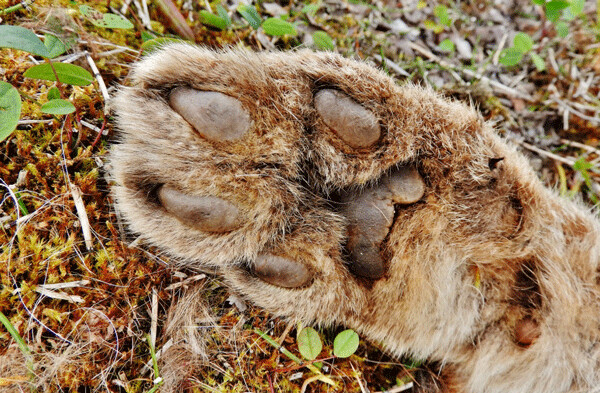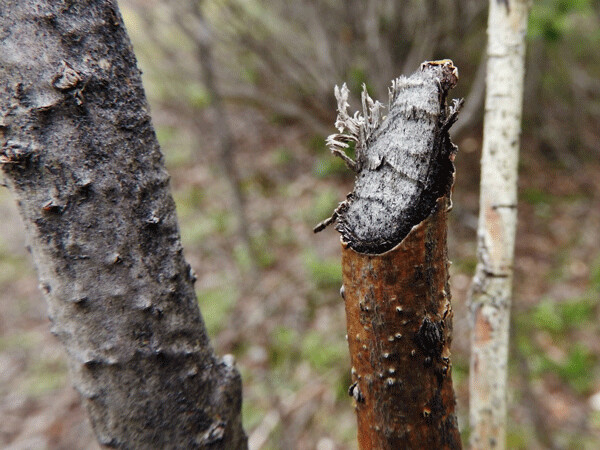Stranger than we can Imagine, OR a Synopsis of Research on the Hare Cycle



Dreaming about snowshoe hares and blueberries up in the Brooks Range near Wiseman, Alaska, soon turned into long days of capturing both the furred and the fruit. Productive days were followed by lively evenings in the bunk house with two graduate students from the University of Alaska Fairbanks; their research advisor, Knut Kielland; and their research partner from the National Park Service, Donna DiFolco.
This group is not the first to try and tease out mechanisms behind a roughly 10-year cycle of snowshoe hare population highs and lows. When hare populations go up, lynx numbers go up, too. When the bunnies crash headlong into a population low, lynx follow. Hungry humans all across the North have been aware of this cycle for hundreds of years, since hares were a staple in their stew pots. I’ve been aware of it since my second semester of college. The lynx-hare cycle has been highlighted in ecology textbooks since 1942, when British ecologists Elton and Nicholson did a thorough quantitative analysis of lynx numbers in the fur trapping records of the Hudson Bay Company.
Knut Kielland has been a wildlife biology professor at University of Alaska Fairbanks since 2000, and one evening in the bunk house I peppered him with questions about the state of research on the lynx-hare cycle. He conducted his own survey of published fur harvest records in Alaska. Then, from 1999 to 2008, he monitored hare numbers directly. During both studies, he found that same, roughly decadal, cycle. Like lots of other scientists, Knut and his students are trying to figure out why. When I asked Knut about his favorite theory, he didn’t have just one answer. Instead, after listing off a bunch of recent research, he chuckled and summarized, “As science usually proceeds…people just keep picking away at the problem.”
Near the end of our conversation, Knut also shared a quote from J.B.S. Haldane, who wrote: “Now, my own suspicion is that the universe is not only queerer than we suppose, but queerer than we can suppose.” The accuracy of that quote didn’t sink in until I’d taken the list of scientists and studies Knut had mentioned and used Google Scholar to try and make sense of it all in my own mind.
The classic, top-down, predator-driven theory posits that as hares increase, the number of lynx who feed on them goes up, too. Hares get eaten. Lynx have more babies. Soon there are too many lynx and not enough hares to feed them all. The lynx population goes down, hare numbers recover. The cycle starts over. Most scientists now believe that this is oversimplified.
For example, predators don’t just kill hares by eating them. As Western society has discovered, living a hectic, stressed-out life can have many sub-lethal impacts on your health, and on your ability to have babies. Rudy Boonstra, et al, (1998) hypothesize that when lynx numbers are high, hares experience more failed attacks on themselves, successful attacks on their neighbors, and frequent encounters with predator sign, i.e. lynx scat. Therefore, hares may spend more time being vigilant and less time seeking out quality twigs to browse on. Put yourself in their (snow)shoes for a second and it’s easy to see why this could lead to a decline in health and reproduction.
What if predators aren’t the hares’ only source of stress? DeAngelis et al, (2015), found that when numerous hares browse heavily on their favorite winter foods, those willow and birch shrubs increase the concentration of anti-herbivory chemicals in their tender new twigs, which makes them less palatable and nutritious to hares.
Therefore, at the same point in the cycle when hares would be experiencing the most stress from high numbers of predators, they also may be left eating woodier and more toxic twigs than ideal. The resulting food stress could impact current and future reproduction, which could prevent an immediate population rebound, and may be one of the drivers of the 10-year cycle.
So, is the cycle’s driver top-down, fueled in one way or another by lynx? Or is it bottom-up, impacted by the chemical defenses of lowly plants?
In an extreme version of a top-down hypothesis, Selas (2006) suggested that the sun itself might play a role. Our sun goes through an 11-year solar or sunspot cycle where it emits varying levels of radiation. When sunspots are low, the ozone layer is thinner, more UVB radiation (the rays that cause sunburns) gets through, and the plants produce chemicals that defend against sunshine instead of hares. Plants become more nutritious, and hares increase. Except that the sun is on an 11-year cycle, while hares typically fluctuate on a 9-10 year cycle. Close, but no cigar.
Herbert Archibald (2014) also looked to the sky for answers. In addition to the 29.5-day lunar cycle we watch every month, our moon has an 18.6-year cycle of wobbling along its path around the Earth. Every 9.3 years (half the cycle) the orbits of moon and the sun line up and join forces. Tides are more extreme, and the full moon rises as the sun sets, resultin
g in “nights without darkness.” Archibald hypothesized that the moon’s cycle could drive the hare’s cycle. Hares rely on the cover of darkness to avoid predation, feed themselves, and care for their young. If a bright moon prevents darkness from falling, Archibald suggested, this could reduce hares’ fitness and reproduction. He found that the average hare cycle lasted 9.4 years—which is intriguingly close to the moon’s.
Archibald’s moonlit mechanism seems a little weak to me. Except, what if the moon’s 9.3-year cycle also impacted the amount of UVB radiation that reaches Earth? Selas (2013) has proposed that at the peak of the moon’s cycle, it interacts strongly with the Earth’s magnetosphere and more cosmic radiation gets through. Plants respond by defending against the UVB radiation instead of hares, and this increases their palatability to hares. Geophysicists don’t think this effect is very strong. Plant physiologists think it just might be strong enough to form an “anchor” in the hare’s cycle, keeping it on schedule, while other factors drive it up and down. Knut is intrigued, because the moon’s 9.3-year cycle is the only one that matches the observed patterns in the lynx-hare cycle.
Hungry lynx, stressed-out bunnies, plant toxins, sun spots, and moon cycles—I never would have guessed that studying snowshoe hares could mean looking beyond our atmosphere, or even beyond the forest canopy. Research continues. People have made tremendous contributions, says Knut, but he is suspicious when they say, “We’ve solved it!” “Being a Norwegian Lutheran,” Knut began, “if someone makes extraordinary claims, I expect extraordinary evidence.” So far, that evidence has been elusive. Maybe information we gathered during this week of field work will add a another piece to the puzzle.
Emily is in Alaska for the summer! Follow the journey in this column, and see additional stories and photos on her blog: http://cablemuseum.org/connect/.
